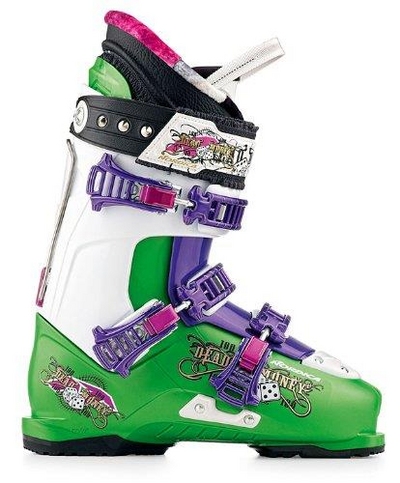Ok buddy, I'll try to keep it dumb for your squirrel-sized brain...
It starts with the shell, nordica builds up the side walls of the shell to be rigid. the focus of the flex is primarily in the sidewalls. when carving a turn, which reminds me, you can carve a turn right? Anyways, when carving a turn, we are simply adjusting our weight laterally, meaning side to side, by rolling the ankle left to right etc. by having a shell with a rigid and stiffer sidewall, you are getting a MUCH better response out of your boots to compliment the new style of skiing.
secondly, progressive flex. this is probably one of the more important parts. with nordica, the more you flex the boots forward, the more stiff they become. no over-flexing the boot. it allows you to ride aggressive without crushing your boots like a pancake.
third, now we are going to start talking about degrees and angles so i hope you can understand this. with any three buckle boot, its not about how many buckles are on the boots, but where those buckles are placed! by placing the middle buckle at a 45 degree angle, you are getting the maximum amount of heel retention in the heel pocket.
fourth, handmade liners, need i say more?
fifth, shock eraser base boards! you get the idea...
sixth, dual density soles, no wearing those babies down after a season!
seventh, just as easy to get in and out of!
and lastly, a much more scientific approach to the flex, rebound, and progression of ski boots. boots flex are measured in newton meters! i know big stuff here. in lamens terms, its a much more exact and definitive measure of the flex of the boot rather than just slapping a "120" or "100" on the boot, which means absolutely nothing, scientifically.
In conclusion, there is nothing you can say about a full tilt that will combat with the breadth of knowledge i just fed to you. Bus is here little timmy, time to go home.


















